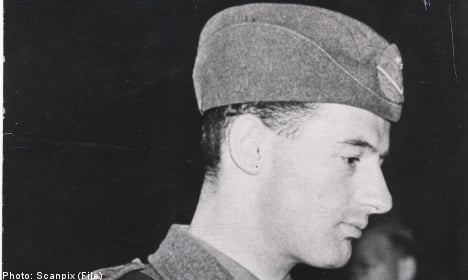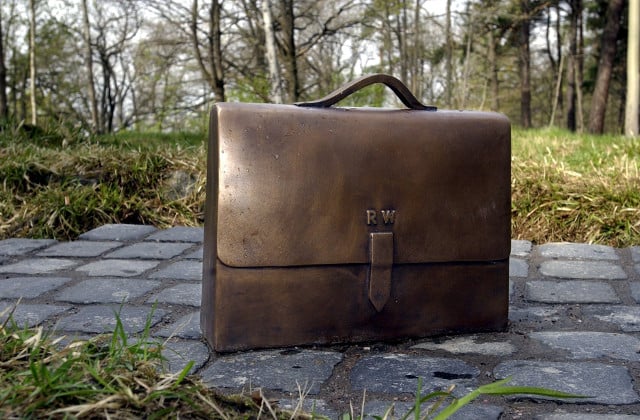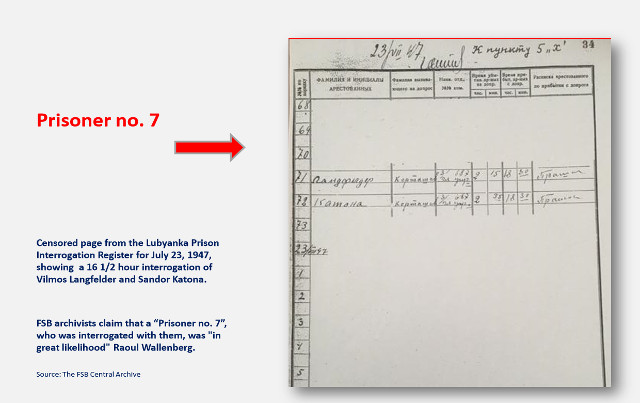When Swedish diplomat Raoul Wallenberg arrived in Hungary in July 1944, he faced a nearly impossible task. He was asked to alleviate the despair of Budapest’s Jews while having few realistic options of providing meaningful aid at his disposal.
The challenges he faced were indeed daunting: an all-powerful enemy set on the physical destruction of a whole populace (as well as those trying to halt the annihilation), aided by a well-oiled bureaucratic apparatus to facilitate the crime. It would have been reasonable to conclude that, facing such murderous machinery, there simply was no remedy.
Instead, Wallenberg and his colleagues probed the system for weak spots, made it work for them, and exploited its bureaucratic nature to help their cause. As a result, thousands of people were fed, housed, clothed, and protected – and somehow managed to survive.
Yet when the rescuer himself became a victim following his arrest by Soviet forces in January 1945, the world fell largely silent.
After more than six decades of continued failure to establish exactly what happened to Raoul Wallenberg in Soviet captivity, some feel that any further inquiries about his fate are essentially futile.
Many Russian as well as Swedish officials encourage this narrative, insisting that at this point, no further information about Wallenberg’s fate can be found.
They promote this view even though many of these same officials privately express serious doubts about the clearly outdated, yet still valid, Soviet version of Wallenberg’s alleged death from a heart attack in July 1947.
Moreover, new research strongly indicates that highly relevant documentation remains available in Russian archives.
So, why do Swedish officials not make a more determined push for the truth? What serious obstacles do they face today?
An entrenched kleptocracy that uses targeted repression to intimidate the public. At its helm is a strong man whose centrally stated goal is to restore Russian state power to its former glory. To that end, the country’s new elite manipulate the news and the history books in order to shore up its internal power base.
Meanwhile, the judicial system is increasingly reduced to serving as a mere extension of these aims. “Putinism” may not send millions of Russians to the Gulag, but instead has put in place a system that slowly silences all critical voices by brutalizing or killing journalists, and – less cruelly, but equally effectively – by muzzling independent media outlets and human rights organizations by cutting off their funding and thereby preventing the public from hearing a full range of opinions and the ability to make educated choices.
Just last month, President Putin ordered the US Agency for International Development (USAID) to leave Russia. The move is yet another draconian step in Putin’s long standing effort to limit foreign influence of so-called non-governmental organizations operating inside Russian borders.
Many of these groups rely heavily on USAID funding, such as the human rights organization Memorial. According to a report by the Associated Press, at least 40 percent of Memorial’s budget comes from USAID grants. The agency’s roughly $50 million dollar annual allocation to Russia also funds numerous social projects devoted to education, health and the environment.
The Kremlin has long resented what it considers outside interference in its internal affairs and just recently the Duma passed a law requiring all group’s receiving financial aid from abroad to either register as “foreign agents” or to face a possible ban. This move labels these groups’ operations in not-so subtle ways as “anti-Russian” by implying they engage in subversive or possibly even criminal activities.
The step was followed by an equally serious new amendment passed unanimously in the lower house of the Russian Parliament on in September which expands the definition of high treason.
Under these circumstances, any efforts to discover the full facts about historical issues like the Raoul Wallenberg case or about the massacre of thousands of Polish officers at Katyn seem almost certainly doomed, since they require the cooperation of Russian historians and archival experts with international researchers.
Foreign observers have watched these developments with growing concerns, but many leaders of Western democracies have not spoken out forcefully against this new wave of repressive measures. In a strong commentary published September 19 in The Washington Post, David J. Kramer, the President of US-based Freedom House (itself a recipient of USAID funds) sharply criticized this silence, arguing that it plays straight into Putin’s hands and other autocrats like him:
“The United States should be pressing publicly and at the highest levels for Putin to reverse his campaign against NGOs, which is wholly inconsistent with internationally accepted norms”, Kramer adds.
Meanwhile, President Obama and most of his European colleagues have said next to nothing. A clear condemnation of Putin’s actions is necessary out of principle and to show support to those brave Russians who are fed up with authorities’ rampant corruption, abuses and heavy-handed tactics.
Western governments should show unwavering solidarity with those brave Russians.
The key word in Kramer’s analysis is “principle” — it is what distinguishes democratic societies from all others, namely that certain basic rights of individuals are inviolate, as a matter of law.
Similarly, when it comes to the question how to solve the Raoul Wallenberg case, the Swedish government and other associated democracies like the US, Israel, Canada, Germany, and Hungary should realize that they have real possibilities to act.
The term “democratic government” implies and ultimately involves all of us. And “all of us” should not simply throw in the towel and say “nothing more can be done”.
Instead, the Swedish government and all of us should emphasize that we continue to seek the truth about Raoul Wallenberg as a matter of principle; that we demand direct access to the many important records that currently remain classified in Russian archives; and that we will put forth these demands until researchers are finally allowed to conduct an investigation that meets the internationally accepted standards of scholarly review.
Let us study first-hand original Soviet-era administrative and investigative prison records; show us exactly which Swedish prisoners were held in Vladimir prison after 1947; let us review Soviet intelligence reports outlining Raoul Wallenberg’s contacts and activities in Budapest; and show us the deliberations of the Soviet leadership from 1947 to 1989, so that we can finally engage in a truly informed discussion.
Wallenberg’s immediate family has recently asked that both the Russian and Swedish governments formally reopen the Wallenberg case. Both countries should accede to this request and ensure that the still unanswered questions are effectively addressed.
In short, just like Wallenberg in Budapest, we should focus our mindset firmly on the steps that can be taken and the many things that can be done.
And “all of us” should insist that we will continue to seek justice for a man who unhesitatingly showed what it means to be true to one’s stated principles.
Such a strong public stance would send a powerful message, one that inextricably links the physical and moral courage Raoul Wallenberg displayed in Hungary sixty eight years ago with the spirit moving thousands of ordinary Russians to demonstrate for the preservation of their own fundamental rights and freedoms on the streets of Moscow today.
Susanne Berger
Susanne Berger is a US-based German historian heavily involved in research into the life of Raoul Wallenberg, the Swedish diplomat who helped prevent the arrests of thousands of Hungarian Jews during the Second World War.




 Please whitelist us to continue reading.
Please whitelist us to continue reading.
Member comments